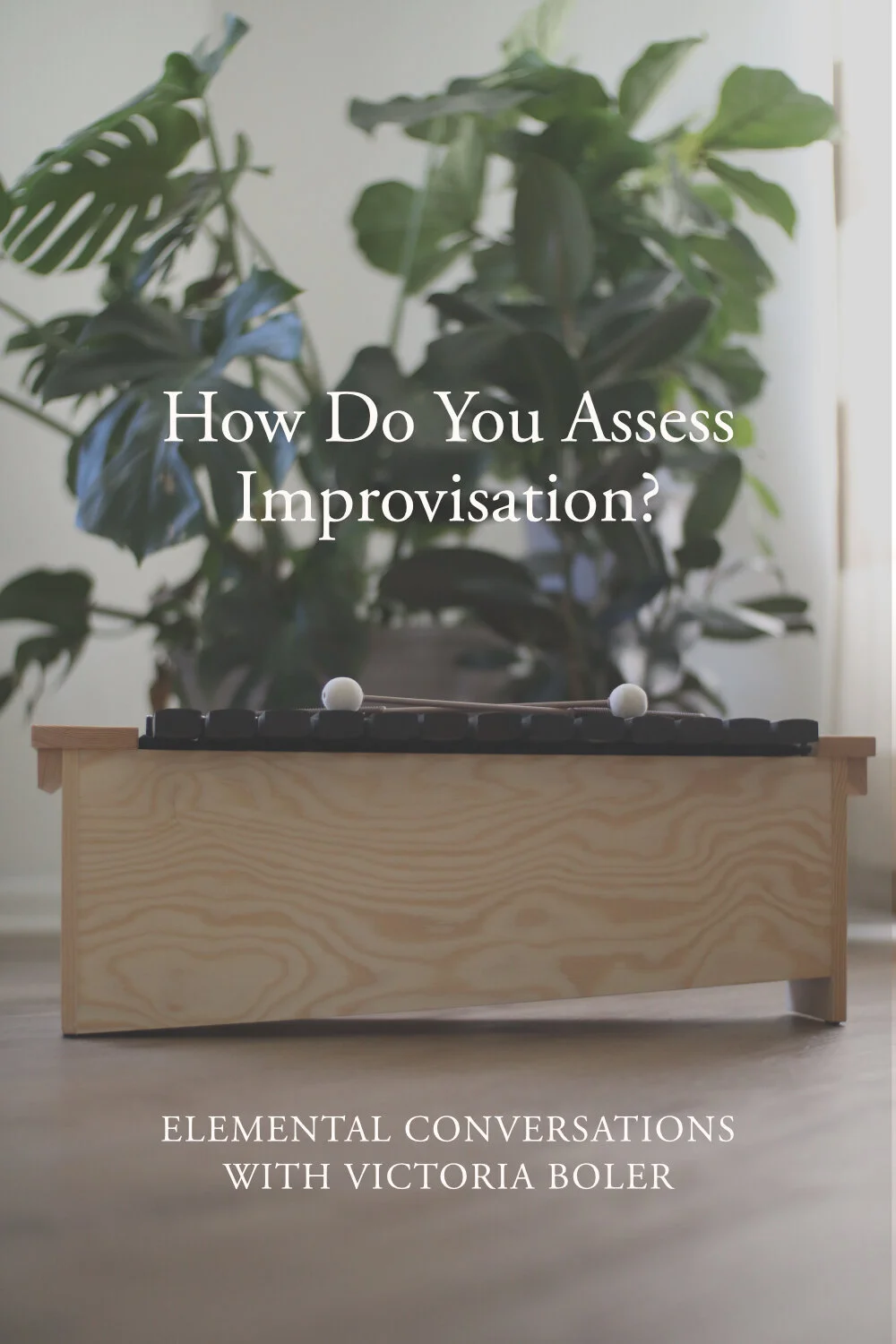How Do You Assess Improvisation?
Season 1 | Episode 6
Show Notes
Do you have any tips for assessing improvisation? I always feel strange assigning a grade since I view improvisation as something personal and subjective. Thanks!
There’s a video on this topic inside the assessment course.
Definitions:
Improvisation - thinking and outputting musically
Assessment - how we know what students need from us
1 - Clarify Improvisation Goals
The assessment is directly tied to the purpose of the activity. What is the point of students improvising?
Some goals are broad (“I want to develop musical thinkers who can actualize their ideas”). For the purpose of assessment, it’s helpful to look at more narrow goals.
These goals are dictated by the larger curriculum planning process.
Here are some sample goals for an improvisation activity:
Improvise 8 beats
Improvise with fluency
Improvise in question and answer form
Improvise within a specific toneset or rhythmic set
Improvise with speech
Improvise in a head voice
Improvise with an instrument
Improvise with a clear recorder tone
Improvise
2 - Determine the Type of Evidence
Qualitative Data and Quantitative Data
Quantitative Data: Data that show quick summarizations through numbers or other means that show an absolute value
Qualitative Data: Data that narrate or describe characteristics
Which gives the best evidence of growth or achievement?
Should we combine them?
Improvisation Examples with Quantitative Data
Improvise with speech - yes or no
Improvise - yes or no
Improvise with fluency
4 - complete fluency throughout the entire improvisation
3 - clear sense of pulse throughout the entire improvisation. Some articulations may occur slightly ahead of or behind the beat
2 - Improvises with an inconsistent pulse
1 - Does not improvise
Improvisation Examples with Quantitative Data
Improvise!
Describe the improvisation - lovely phrasing, question and answer form, repeated rhythms, good use of rests
Improvise a specific scene
Describe the text painting and use of phrasing
Improvise with speech
Describe the situation around a classroom management error that could have contributed to a low score
3 - Partner with Students
“How do you think you did?”
“Why do you think that?”
Asking students to narrate their thinking and describe their performance can give us valuable insight into their musical development
When we assess improvisation, we’ll start with clear goals as defined by our larger curriculum planning process.
We’ll choose the type of data - qualitative or quantitative - that best represent our goals.
We’ll partner with students so the feedback loop stays strong.
When we combine all these approaches, improvisation assessment becomes much more fun and manageable, both for us and our students.

